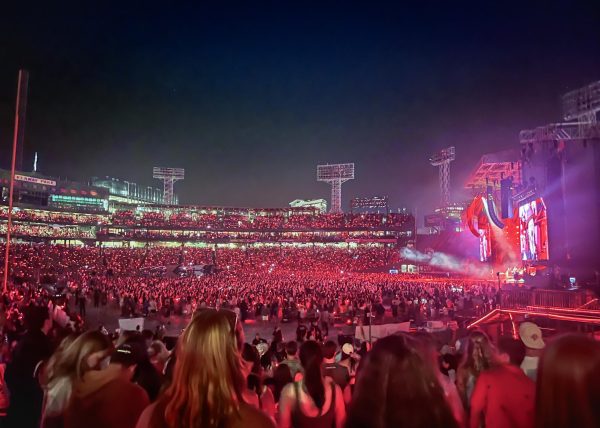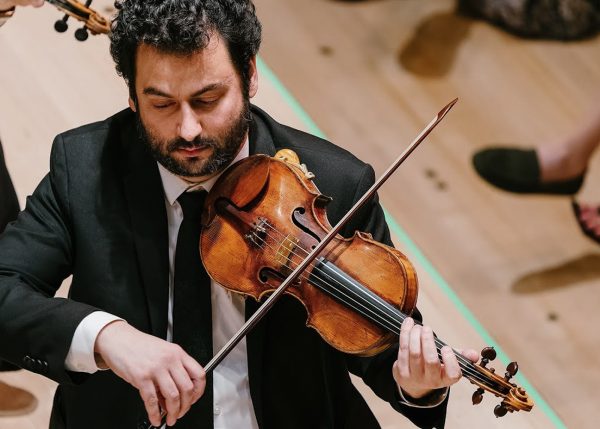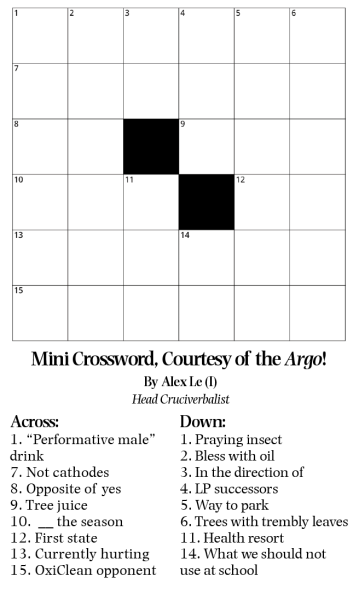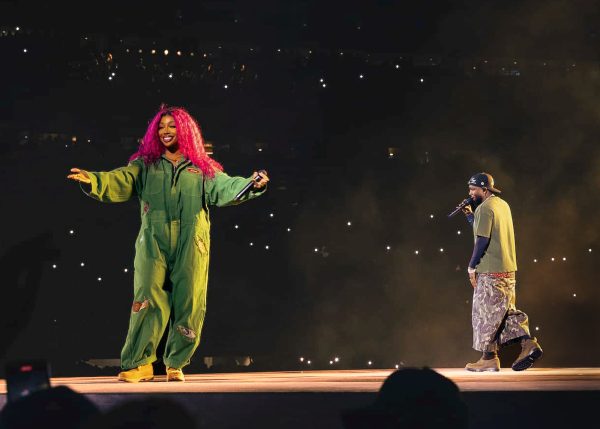The Abstract World of Frank Bowling’s Americas
From October 22 to April 9, the Museum of Fine Arts (MFA) in Boston is hosting an exhibit titled Frank Bowling’s Americas. The showcase features over 30 paintings from Guyana-born British painter and artist Frank Bowling. General admission fees are 27 dollars for adults, 10 dollars for ages 7 to 17 and free for children under six years old.
Born in 1934, Bowling graduated from the Royal College of Art in London with a silver medal in 1962. He then moved to New York in 1966 and lived there for almost a decade. He taught as an assistant professor at the Massachusetts College of Art and Design in Boston for a few years and was elected to the Royal Academy of Arts in 2005.
Bowling’s work is mostly abstract expressionist, a style which originated in Europe, but blossomed in New York City after World War II. Boston Latin School visual arts teacher Mr. Joseph Carrigg comments, “Before, artists did all the portraits and the scenes, but then the camera came around,” increasing the popularity for abstract arts.
Frank Bowling’s Americas showcases the artwork Bowling created during his residence in New York. According to the MFA’s website, “Frank Bowling’s Americas offers an essential contribution to a more cross-cultural and global understanding of modern art.”
The exhibit is located on the first floor, near the Fenway entrance of the museum. The first room displays Bowling’s Map Paintings, which depicts the outlines of several continents. Parts of the continents’ outlines are clearly visible, while other parts blend into the background. These paintings marked the beginning of Bowling’s experimentation with the abstract expressionist style.
The next room includes copies and notes from Bowling’s 5+1 project, an exhibition curated by Bowling that displays the art of five African American artists along with his own. This project draws inspiration from the Black Power movement, which gained momentum during his time in New York. Bowling also wrote for a few years as an editor for the Arts Magazine and contributed to the discussion of “Black arts.”
Finally, the exhibit leads to a room with works that emphasize Bowling’s various painting techniques. In his collection Pouring Paintings, Bowling poured paint from above to create different textures on the canvas. He routinely employs slashing, stitching and stenciling techniques in his artwork. In pieces such as Looking West Again and 4 Bensusi, objects are painted on and ingrained into the product to introduce personal meaning.
Bowling also uses a mix of materials like ammonia, acrylic paint and metallic paint to produce radiant colors and vivid tones. In Bowling’s Suncrush, the bright hues evoke a warmth likely representative of Bowling’s early life in Guyana’s tropical weather.
Frank Bowling says, “I’m looking for something that will jolt me and I can feel that rush — the nervous system being so excited it’s going to act. It’s what keeps me awake at night.” This passion is beautifully captured in Frank Bowling’s Americas.






